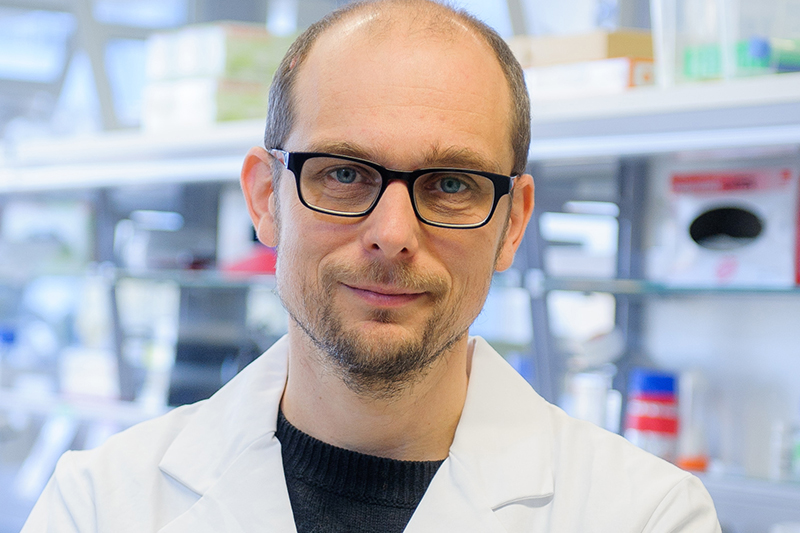CV

Prof. Dr. Dominik Boos
Faculty of Biology
Center of Medical Biotechnology
University of Duisburg-Essen
Vitae
| Scientific Career and Education | |
| Since 2014 | Independent group leader at the Center of Medical Biotechnology (ZMB) in Essen, Germany, at the University of Duisburg-Essen. |
| 2007 - 2013 | Postdoc in the lab of Dr John FX Diffley at the London Research Institute (LRI), Clare Hall laboratories. My work on the initiation of DNA replication in vertebrates builds the basis for my independent research in Essen. |
| 2007 - 2007 | Postdoc in my PhD lab to finalise my PhD project. |
| 2002 - 2007 | Graduate student in the lab of Prof Olaf Stemmann at the Max-Planck Institute of Biochemistry in Martinsried, Germany. PhD thesis on the biology chromosome separation in vertebrate mitosis and meiosis by the protease separase: “Separase: Regulation, Functions and Novel Substrates”. |
| 1996 - 2002 | Undergraduate student of Biology at the Eberhard Karls Universität,Tübingen, Germany. Diploma thesis at the Institute for Cell Biology, in Prof. Alfred Nordheim's lab: “Retroviral Infection and In Vitro Hematopoiesis of Wildtype- and srf(-/-) Mouse Embryonic Stem Cells“. |
| Awards | |
| 2013 |
Sir Henry Dale Fellowship (Royal Society of London/Welcome Trust); £996,000 over 5 years (declined).
NRW Rueckkehrerfoerderprogramm, €1.25 Mio for 5 years. |
| 2009 | EMBO Long Term Fellowship |
| 2007 | CRUK Postdoc Fellowship |
| Scientific Achievements |
As an undergraduate student of biology in Tübingen I developed a strong interest in how cells function. Based on this I decided to pursue my PhD in Prof. Olaf Stemmann’s lab at the Max-Planck-Institute of Biochemistry in Munich, working on the function and regulation of the protease separase in mitosis and meiosis. Separase induces sister chromatid segregation in anaphase by cleaving cohesin, the “glue” that holds sister chromatids together. Canonically, separase is kept inactive before anaphase by binding its inhibitor, securin. We discovered an additional, securin-independent, mechanism of separase inhibition: high Cdk1 activity leads to phosphorylation of separase (Gorr et al. Mol Cell 2005). This enables Cyclin B/Cdk1 to form contacts with separase (Boos et al. JBC 2008), leading to mutual inhibition of the protease and the kinase. This work provided an explanation how cells without securin still manage timely activation of separase and sister chromatid separation. It also showed how separase can help down-regulate Cdk1 activity, thus facilitating in mouse oocytes the transition of meiosis I to meiosis II. Based on my interest in fundamental cell biological questions I then chose to do a postdoc in the lab of Dr John Diffley at the CRUK London Research Institute to work on how cells duplicate their genome by DNA replication before they can separate their chromosomes in mitosis. I could make two major contributions to the field of mammalian replication: I established the protein Treslin as the functional vertebrate orthologue of yeast Sld3, demonstrating it is a hub for the regulation of replication (Boos et al. Cur Biol 2011). My second contribution (Boos et al. Science 2013) was to identify an entirely novel vertebrate-specific replication initiation factor, the Treslin-interacting MTBP protein (Mdm2 binding protein), showing that, despite conservation of fundamental replication mechanisms with yeast, significant differences exist in humans. In my own lab in Essen I would like to build on my postdoc work in order to find out how DNA replication occurs in vertebrate cells, how regulation of replication integrates it into the complex cellular processes, and mechanisms of DNA replication contribute to genetic instability and cancer formation. |
